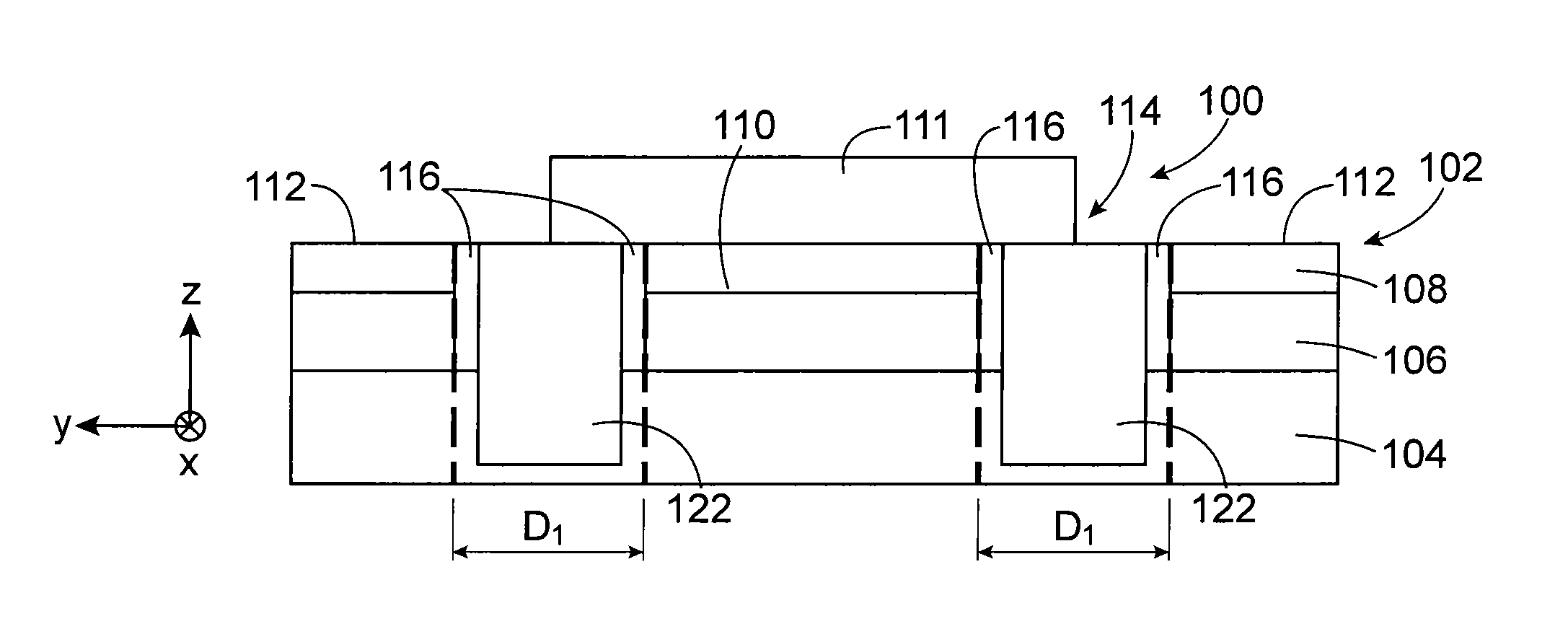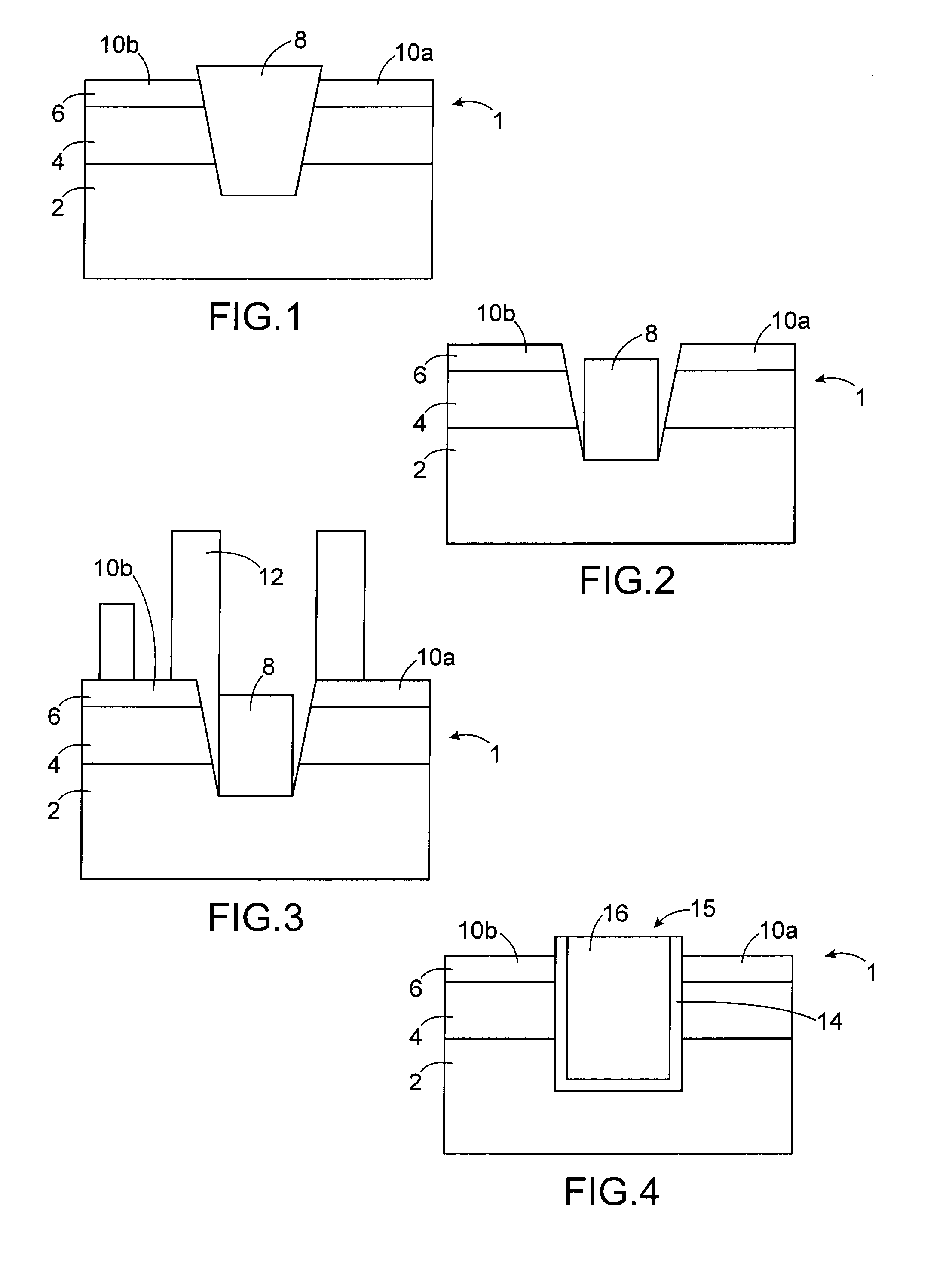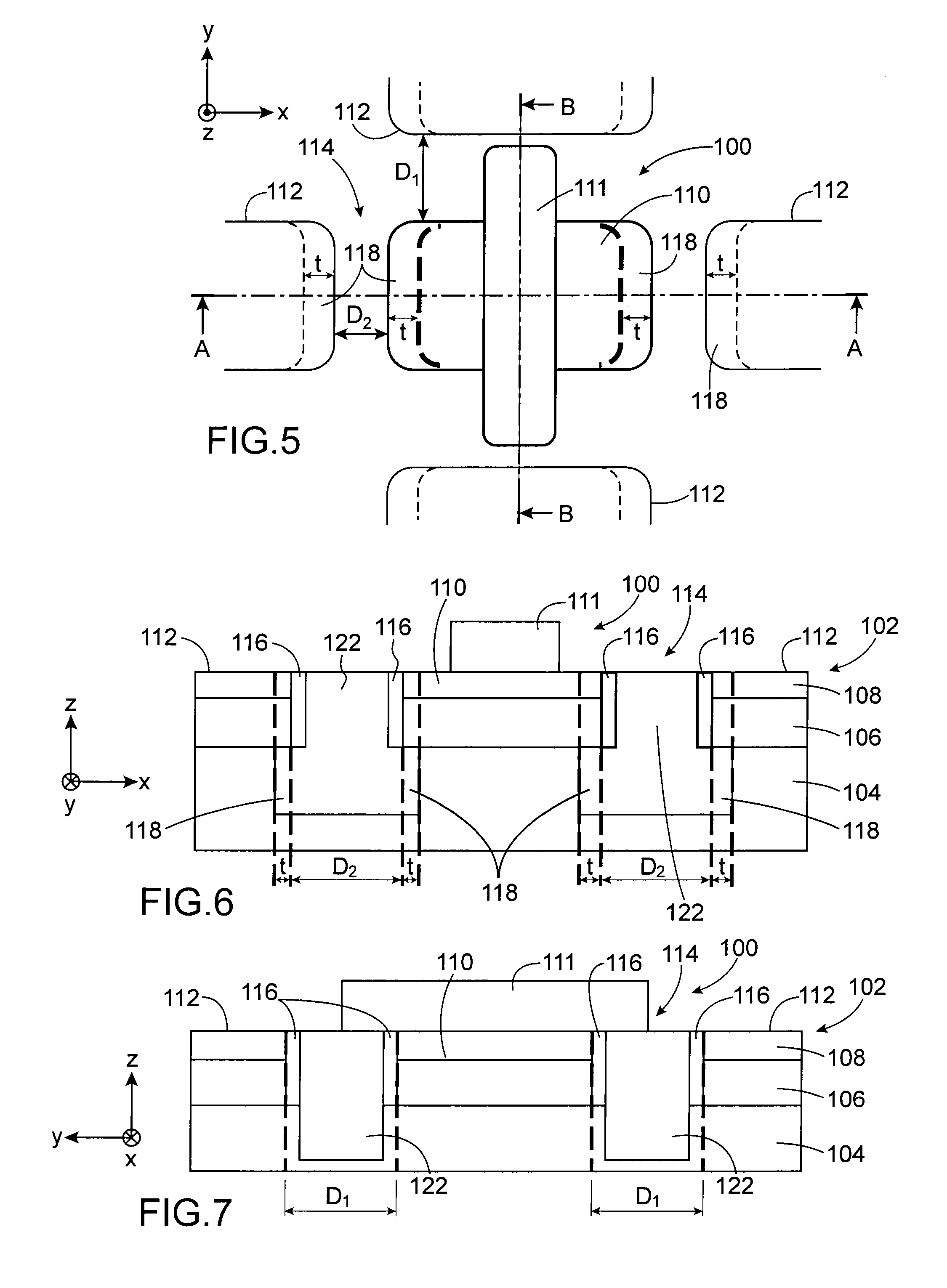Method for fabricating microelectronic devices with isolation trenches partially formed under active regions
- Summary
- Abstract
- Description
- Claims
- Application Information
AI Technical Summary
Benefits of technology
Problems solved by technology
Method used
Image
Examples
first embodiment
[0041]Referring first to FIGS. 5-7 which show schematically a microelectronic device 100, here a FDSOI transistor of the UTBB type, produced with a method which will be further described. FIG. 5 is a top view of the transistor 100, and FIGS. 6 and 7 are cross-sectional views respectively along lines AA and BB shown in FIG. 5.
[0042]The transistor 100 is produced in a substrate 102 of SOI type comprising a support layer 104, or thick layer, composed of semiconductor, for example silicon-based, a dielectric thin layer 106 (BOX), for example composed of SiO2, and a thin layer 108, or surface layer, composed of semiconductor, here silicon. A part of the semiconductor thin layer 108 corresponds to an active region 110 of the transistor 100 comprising a channel, a source region and a drain region of the transistor 100. A gate 111 of the transistor 100 is formed on the active region 110.
[0043]Other active regions 112 of other microelectronic devices are also made in the substrate 102 and s...
second embodiment
[0083]FIGS. 21 to 23 show schematically a microelectronic device 200, here a FDSOI transistor of the UTBB type, according to a
[0084]FIG. 21 is a top view of the transistor 200, FIGS. 22 and 23 are cross-sectional views respectively along lines AA and BB shown in FIG. 21.
[0085]Compared to the previously described device 100 in which only two of the four side walls of the isolation trench 114 extend under the active region 110, the four side walls of the isolation trench 214 of the device 200 all extend under the active region 110. The dielectric portions 118 are therefore present in the entire periphery of the active region 110.
[0086]Such isolation trench 214 is achieved via a ionic implantation (according to the first or the second variant as disclosed previously) of all side walls of the trench at the level of the thick semiconductor layer 104, for example analogously to the achievement of the portions 118 of transistor 100 described above. The dielectric portions 118 are in contac...
PUM
 Login to View More
Login to View More Abstract
Description
Claims
Application Information
 Login to View More
Login to View More - R&D
- Intellectual Property
- Life Sciences
- Materials
- Tech Scout
- Unparalleled Data Quality
- Higher Quality Content
- 60% Fewer Hallucinations
Browse by: Latest US Patents, China's latest patents, Technical Efficacy Thesaurus, Application Domain, Technology Topic, Popular Technical Reports.
© 2025 PatSnap. All rights reserved.Legal|Privacy policy|Modern Slavery Act Transparency Statement|Sitemap|About US| Contact US: help@patsnap.com



